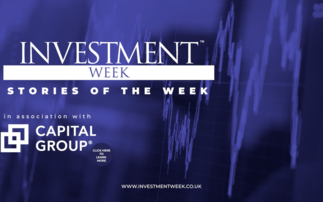
As I was driving home recently, I called Charles Shriver. We were talking about this Special Topic when he said something quite clever. It perfectly captured how to think about interest rates in the future.
Before I tell you what he said, let me provide some background:
Charles is a portfolio manager and cochair of the Asset Allocation Committee (AAC). We work together on all of our AAC Special Topics. He's a fantastic investor, collaborator, and sounding board.
Prior to our conversation, Charles and I had asked Cesare Buiatti, senior quantitative investment analyst, to backfill the history of real interest rates—in other words, interest rates with inflation stripped out—in the United States by historical regime.
Cesare estimated the average real rate during each of the following regimes:
1. Postwar Boom (1955–1969)1
This era of prosperity had the strongest economic growth and the lowest unemployment of our four regimes. Inflation was also low, in the 2% range. Automation technologies and a broadening labour force that included more women, minority groups, immigrants, and globalization drove significant productivity gains.
2. Stagflation (1970–1981)
During the Stagflation regime, inflation spiked due to supply shocks, even when demand was weak because of economic stagnation. Inflation was high and often unanchored—in other words, consumers did not expect it to be temporary. Growth in gross domestic product (GDP) was low and unstable.
3. Old Normal (1982–2007)
The steady decline in interest rates was the defining feature of this era. Economic growth and inflation were "normal," at about 3% each. Capital markets outperformed the economy due to rising valuations and cheap leverage.
4. New Normal (2008–2019)
After the global financial crisis (GFC), we entered an era of extremely accommodative central bank policy. In the New Normal, the economy got stuck in neutral, with low rates, low growth, and low inflation. This regime ended with the coronavirus pandemic.
It's difficult to define the current regime as we unwind pandemic distortions.
What did Charles say?
As I was white-knuckling the four-lane transition on Light Street to make a right on Conway, with my head turned toward the car's blind spot, I asked Charles what Cesare's results looked like.
His answer, like a TV jingle or a Taylor Swift song, has been an earworm stuck in my brain since this conversation:
"The New Normal was abnormal."
It was indeed. The table below shows the average real rate by regime. To estimate the real rate, we remove inflation expectations.
Average 10-year real rate by historical regime

Sources: Federal Reserve Board, Federal Reserve Bank of Philadelphia, University of Michigan.
Analysis by T. Rowe Price. Real rates are equal to the difference between the 10-year nominal U.S. Treasury yield and expected inflation. The latter is computed as the average of Livingston 1-Year Inflation Expectations, University of Michigan 5-Year Inflation Expectations, and Survey of Professional Forecasters 10-Year Inflation Expectations (from January 1955 to March 1990), as well as the average of the last two only from April 1990 to December 2019.
It's counterintuitive to classify an entire 11-year period as abnormal. However, the global financial crisis transformed monetary policy. Zero interest rates simply can't be "normal" if you believe in the time value of money.
Therefore, I expect that over the next decade, real rates will remain higher than they were during the prior decade. The pandemic served as the reset button. "The pandemic was a shock that created a new inflation equilibrium," said a committee member, who added, "China now may be masking this shift a bit."
You might disagree with that view. Let me try to argue both sides:
Why we could go back to the New Normal
An aging population puts downward pressure on productivity, as does high government debt (more on this topic later). All else equal, lower productivity means lower growth and lower real rates.
However, artificial intelligence (AI) could offset these factors. One of my colleagues described AI as "the greatest boost to human productivity since electricity." While he may be prone to superlatives, the venerable consulting firm McKinsey & Company agrees with him. From their report titled, "The Economic Potential of Generative AI: The Next Productivity Frontier":
Our latest research estimates that generative AI could add the equivalent of $2.6 trillion to $4.4 trillion annually across the 63 use cases we analysed—by comparison, the United Kingdom's entire GDP in 2021 was $3.1 trillion. This estimate would roughly double if we include the impact of embedding generative AI into software that is currently used for other tasks beyond those use cases.2
You might counter that AI will be deflationary because robots will replace humans. However, we're looking at real rates (excluding inflation) here. Also, every technological innovation in history was thought to replace human jobs and became additive to employment by creating new jobs.
Here are some thoughts our Chief International Economist Nikolaj Schmidt recently shared with me:
The post-GFC period was the outlier. In my view, the story is quite simple: The post‑GFC period was the Great Deleveraging. Whenever U.S. households (and households, governments, and corporations in the rest of the world) had an extra dollar, they used it to pay off debt. Consequently, we were caught in a world of excess savings and deficit demand. To avoid a downward spiral (falling demand leading to falling employment, which causes a further decline in demand), central banks had little choice but to run ultra-loose monetary policy. In my view, this is [famous bond investor Mohamed] El-Erian's New Normal—and I suspect that it was a much better description of the world relative to the Secular Stagnation thesis. The distinction between the two is obviously important because they have very different implications for the path we are on today. (We should not dismiss the Secular Stagnation thesis, but it was just less important relative to the New Normal.)
Another factor that could sustain higher real rates is the return to a more normal term premium. In a "normal" economic environment, investors should require compensation for taking on interest rate risk.
Important Information
This material is being furnished for general informational and/or marketing purposes only. The material does not constitute or undertake to give advice of any nature, including fiduciary investment advice, nor is it intended to serve as the primary basis for an investment decision. Prospective investors are recommended to seek independent legal, financial and tax advice before making any investment decision. T. Rowe Price group of companies including T. Rowe Price Associates, Inc. and/or its affiliates receive revenue from T. Rowe Price investment products and services. Past performance is not a reliable indicator of future performance. The value of an investment and any income from it can go down as well as up. Investors may get back less than the amount invested.
The material does not constitute a distribution, an offer, an invitation, a personal or general recommendation or solicitation to sell or buy any securities in any jurisdiction or to conduct any particular investment activity. The material has not been reviewed by any regulatory authority in any jurisdiction.
Information and opinions presented have been obtained or derived from sources believed to be reliable and current; however, we cannot guarantee the sources' accuracy or completeness. There is no guarantee that any forecasts made will come to pass. The views contained herein are as of the date written and are subject to change without notice; these views may differ from those of other T. Rowe Price group companies and/or associates. Under no circumstances should the material, in whole or in part, be copied or redistributed without consent from T. Rowe Price.
The material is not intended for use by persons in jurisdictions which prohibit or restrict the distribution of the material and in certain countries the material is provided upon specific request.
It is not intended for distribution to retail investors in any jurisdiction.
1 Because of data limitations, our "postwar boom" starts in 1955—a decade after the end of World War II. But bear with me: The demobilization and the Korean War made the 1945–1953 period different from our 1955–1969 postwar boom.
2 https://www.mckinsey.com/capabilities/mckinsey-digital/our-insights/the-economic-potential-of-generative-ai-the-next-productivity-frontier#key-insights













